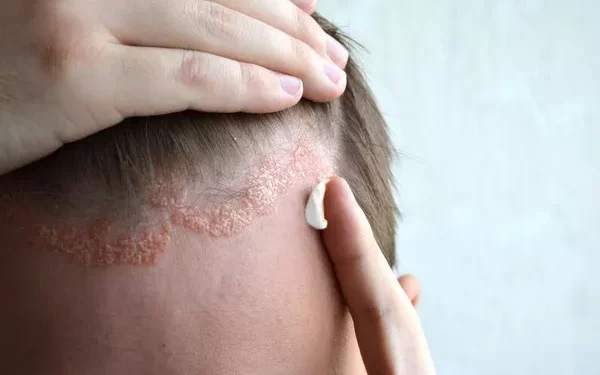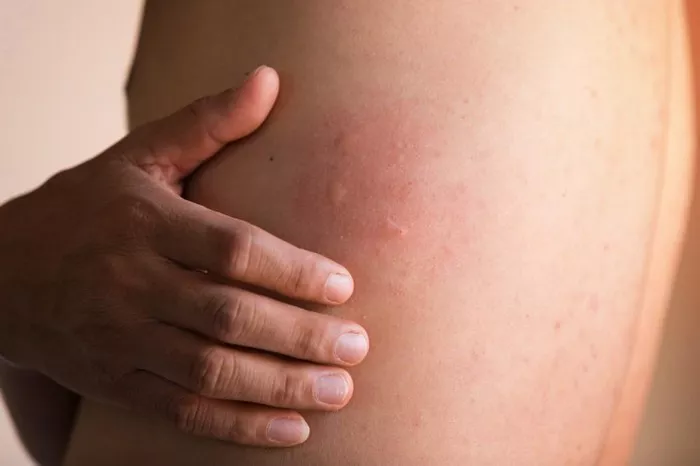Sebaceous dermatitis, commonly known as seborrheic dermatitis, is a chronic inflammatory skin condition primarily affecting areas rich in sebaceous (oil) glands, such as the scalp, face, and upper trunk. Characterized by red, scaly, itchy patches, it can cause significant discomfort and affect a person’s quality of life. This comprehensive guide delves into the causes, symptoms, and effective treatment strategies for managing sebaceous dermatitis.
Understanding Sebaceous Dermatitis
Sebaceous dermatitis is a multifactorial condition influenced by genetic, environmental, and immunological factors. The exact cause remains unclear, but it is associated with an overgrowth of Malassezia yeast, which thrives in oily environments. This overgrowth triggers an inflammatory response, leading to the characteristic symptoms of sebaceous dermatitis.
Symptoms and Diagnosis
The hallmark symptoms of sebaceous dermatitis include:
- Red, inflamed skin: Typically seen on the scalp, face (especially around the nose, eyebrows, and ears), and upper chest.
- Greasy, scaly patches: The affected areas often appear oily and may have yellow or white scales.
- Itching and discomfort: The itchiness can range from mild to severe, sometimes leading to scratching and secondary infections.
- Dandruff: When the scalp is involved, flaking skin can become a persistent issue.
Diagnosis is primarily clinical, based on the appearance and location of the lesions. In ambiguous cases, a dermatologist may perform a skin biopsy to rule out other conditions with similar presentations, such as psoriasis or eczema.
Treatment Strategies
Effective management of sebaceous dermatitis involves a combination of topical treatments, lifestyle modifications, and in some cases, systemic therapy. The primary goals are to reduce inflammation, control the Malassezia yeast population, and alleviate symptoms.
Topical Treatments
1. Antifungal Agents
Since Malassezia yeast plays a crucial role in sebaceous dermatitis, antifungal treatments are a cornerstone of therapy. Common antifungal agents include:
- Ketoconazole: Available in creams, gels, and shampoos, ketoconazole helps reduce yeast populations and inflammation. Shampoos containing 2% ketoconazole are particularly effective for scalp involvement.
- Ciclopirox: Another antifungal agent available in cream and shampoo formulations. It has both antifungal and anti-inflammatory properties.
- Selenium Sulfide: Often found in medicated shampoos, selenium sulfide reduces flaking and controls yeast growth.
2. Anti-Inflammatory Treatments
- Corticosteroids: Topical corticosteroids can quickly reduce inflammation and itching. Low-potency steroids (e.g., hydrocortisone) are typically used on the face, while higher-potency steroids may be necessary for the scalp or trunk. However, prolonged use of corticosteroids can lead to skin thinning and other side effects, so they should be used judiciously.
- Calcineurin Inhibitors: Tacrolimus and pimecrolimus are non-steroidal anti-inflammatory agents that can be used on sensitive areas like the face and eyelids. They offer an alternative for patients who cannot tolerate corticosteroids.
3. Keratolytic Agents
- Salicylic Acid: This helps remove scales and smoothens the skin. It is often found in combination with other antifungal or anti-inflammatory agents in shampoos and creams.
- Coal Tar: Coal tar shampoos can reduce scaling and itching, although they may have an unpleasant odor and can stain fabrics.
SEE ALSO: How to Treat Pregnancy Eczema
Lifestyle Modifications
1. Regular Cleansing
Maintaining a consistent skincare routine is essential. Gentle cleansing with a non-soap cleanser can help reduce oiliness and remove scales without irritating the skin. Over-washing, however, should be avoided as it can strip the skin of natural oils and worsen inflammation.
2. Moisturizing
Keeping the skin moisturized is crucial in managing sebaceous dermatitis. Non-comedogenic, fragrance-free moisturizers help maintain the skin barrier without contributing to oiliness. Products containing ceramides, hyaluronic acid, or glycerin are particularly beneficial.
3. Diet and Nutrition
While the link between diet and sebaceous dermatitis is not fully understood, some patients report improvement with dietary changes. A diet rich in antioxidants, omega-3 fatty acids, and probiotics may help reduce inflammation and support skin health. Reducing the intake of sugary and processed foods can also be beneficial.
Systemic Treatments
For severe or resistant cases of sebaceous dermatitis, systemic treatments may be necessary. These include:
1. Oral Antifungals
- Itraconazole: This antifungal medication can be effective for patients who do not respond to topical treatments. It is usually prescribed for a short duration due to potential side effects.
- Fluconazole: Another systemic antifungal option, fluconazole is often used for widespread or refractory cases.
2. Oral Anti-Inflammatory Agents
- Tetracycline Antibiotics: Doxycycline and minocycline have anti-inflammatory properties that can benefit sebaceous dermatitis, particularly when there is significant facial involvement.
- Isotretinoin: In severe cases, isotretinoin, a powerful retinoid, can reduce sebaceous gland activity and inflammation. It requires close monitoring due to its potential side effects.
Alternative and Adjunctive Therapies
In addition to conventional treatments, several alternative therapies can support the management of sebaceous dermatitis:
1. Phototherapy
- UVB Light Therapy: This treatment involves controlled exposure to ultraviolet B light, which can reduce inflammation and yeast populations. It is typically administered in a dermatologist’s office.
2. Herbal and Natural Remedies
- Tea Tree Oil: Known for its antifungal and anti-inflammatory properties, tea tree oil can be diluted and applied to affected areas. However, it should be used with caution to avoid skin irritation.
- Aloe Vera: Aloe vera gel has soothing and anti-inflammatory effects, making it a useful adjunct for reducing redness and itching.
3. Stress Management
Stress is a known trigger for sebaceous dermatitis flare-ups. Incorporating stress-reduction techniques such as mindfulness, yoga, or regular exercise can help manage symptoms.
Long-Term Management and Prevention
Sebaceous dermatitis is a chronic condition, and long-term management focuses on minimizing flare-ups and maintaining skin health. Key strategies include:
1. Regular Follow-Up
Regular visits to a dermatologist can help monitor the condition and adjust treatment plans as necessary. Early intervention during flare-ups can prevent them from becoming severe.
2. Consistent Skincare Routine
Adhering to a consistent skincare regimen tailored to your skin type and condition is essential. Avoiding harsh products and incorporating gentle, effective treatments can make a significant difference.
3. Avoiding Triggers
Identifying and avoiding triggers that exacerbate sebaceous dermatitis is crucial. Common triggers include stress, hormonal changes, harsh weather conditions, and certain skincare products.
4. Education and Support
Understanding sebaceous dermatitis and staying informed about new treatments and management strategies can empower patients. Support groups and patient education programs can provide valuable resources and emotional support.
Conclusion
Sebaceous dermatitis, while chronic and sometimes challenging to manage, can be effectively controlled with a combination of topical treatments, lifestyle modifications, and, when necessary, systemic therapies. Early diagnosis and a personalized treatment plan are key to reducing symptoms and improving quality of life. With the right approach, individuals with sebaceous dermatitis can achieve significant relief and maintain healthy skin.
Related Topics:


























